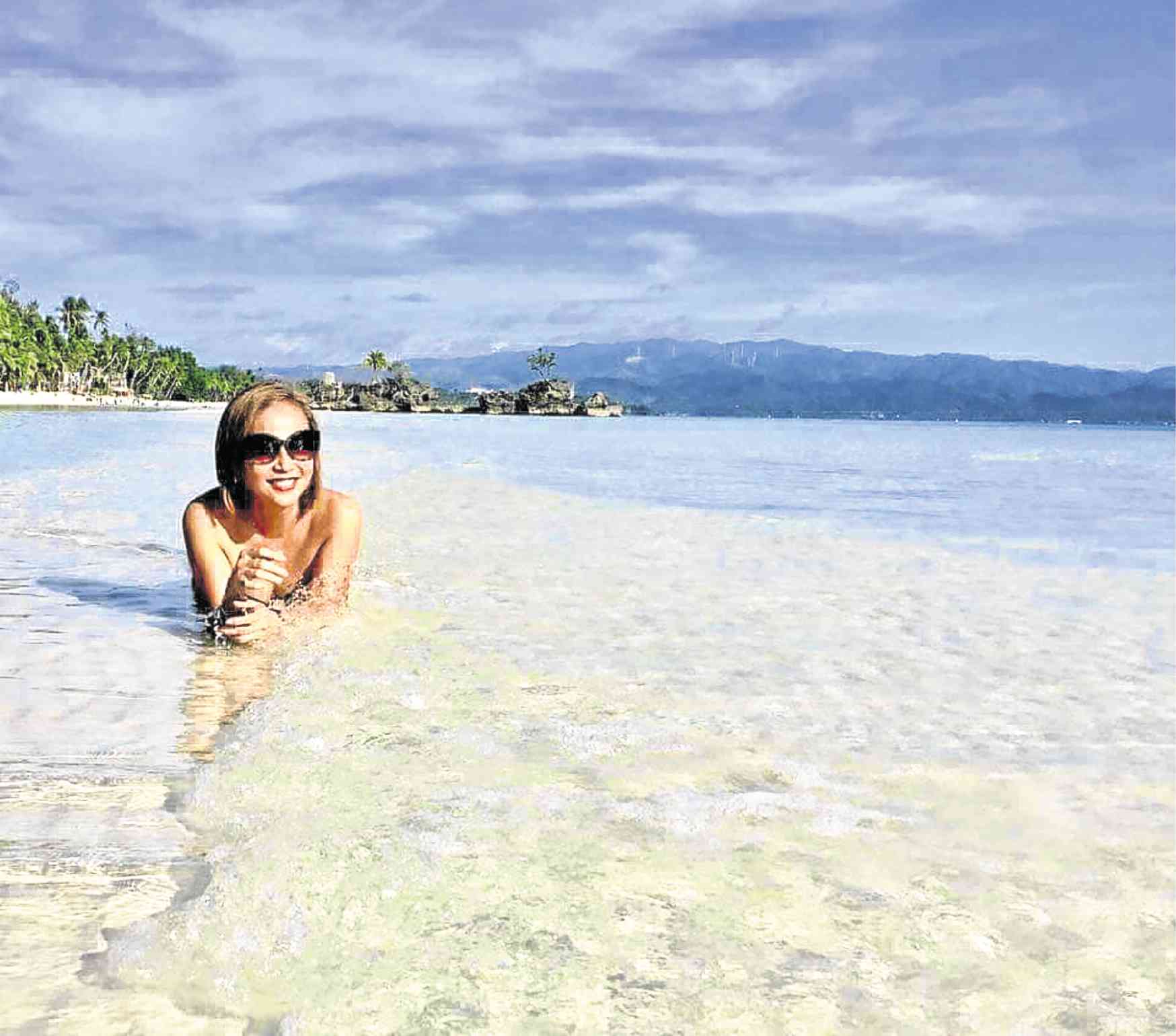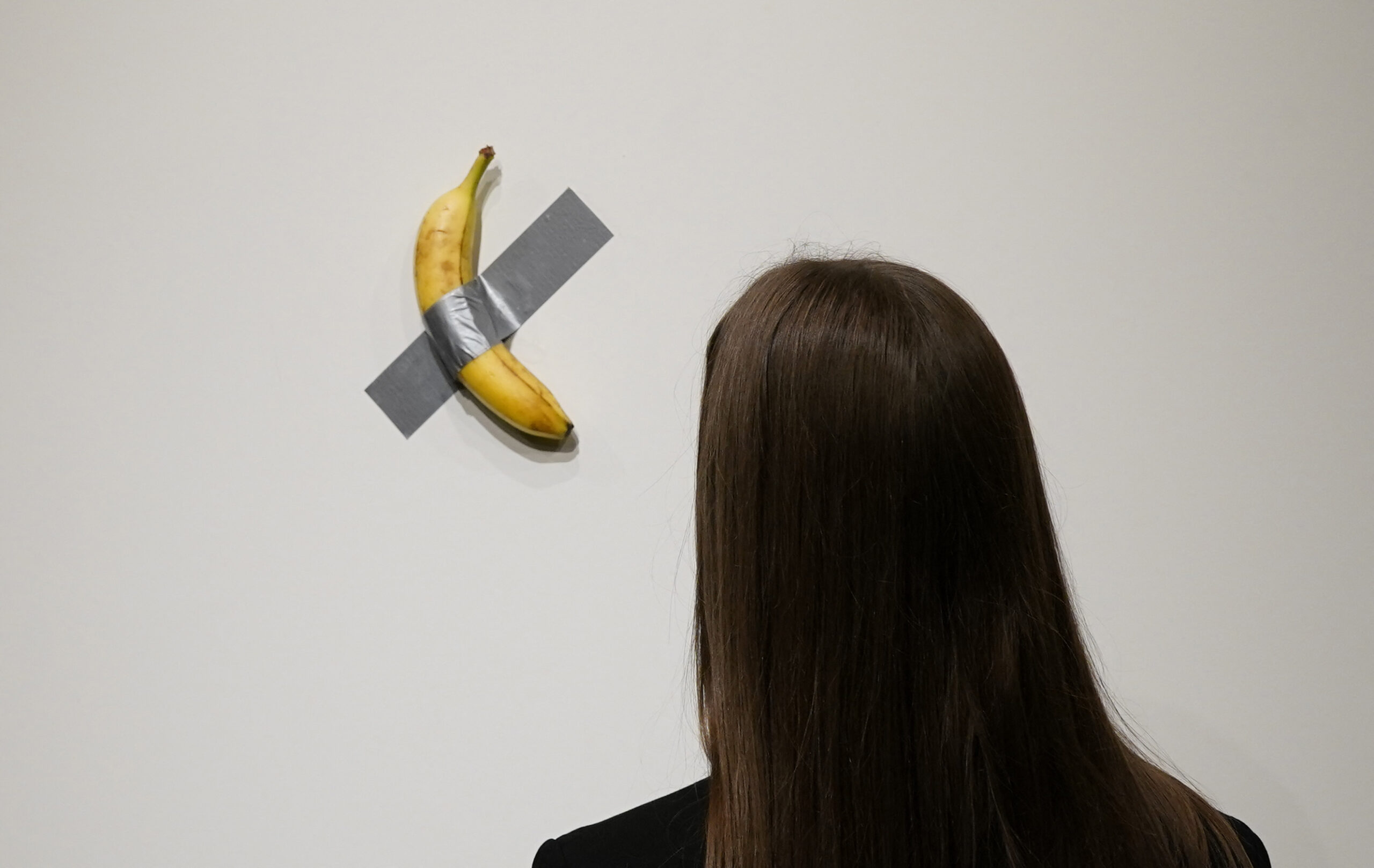
From the outside looking in, one would surmise that life in “closed” Boracay Island is idyllic. Having the beach all to ourselves is indeed a once-in-a-lifetime experience that money can’t buy.
Since the days leading to the government’s closure on April 26, I’ve been trying to share glimpses of what is most often construed as a charmed life sprinkled with magic dust—but peppered with concrete rubble dust. Thus is the biting reality of life on an island in transition.
It is a bipolar existence with peaks and lows, moment to moment. In a word, it is exhausting, emotionally.
From rose-colored days with picturesque, crowdless seaside scenes, to war-torn-looking streets and buildings, all on the same day—the stark contrast of an island in rehab is like day and night. Many of us navigate an obstacle course of gigantic pipes, heavy equipment blocking the beach and mountains of rubble on makeshift stepping stones (of rubble and sandbags) over floods, just to get to the main road, and then through narrow passages with open manholes—and so many stray, emaciated dogs—to get to White Beach.
The beaches are absolutely pristine, without a boat, vendor or tourist in sight. Moments like these take your breath away and take you back to the love-at-first-sight affair with Boracay, but in fact, you feel a heartbreak, like in a bad breakup.
One comment says it all: “The beach is gorgeous… The water is also healing… But when you go to the roads and inland, it’s a different story.”
By night, Boracay is a ghost town. The constantly bustling pathways are dark and empty. Locals head home after sunset or after dinner, or after an early night-out.
We are grieving for the Boracay we once knew, and the fear of the unknown—the uncertainty about how this will all end.
At the back of our minds, we are also coming to terms with the very real prospect of having to leave the island for good, if we are unable to cope with the losses after the six-month closure, or if the government does more harm than good in the end.
Just like a person in rehab, who knows if she will really recover from the disease? Are the “therapists” even competent?
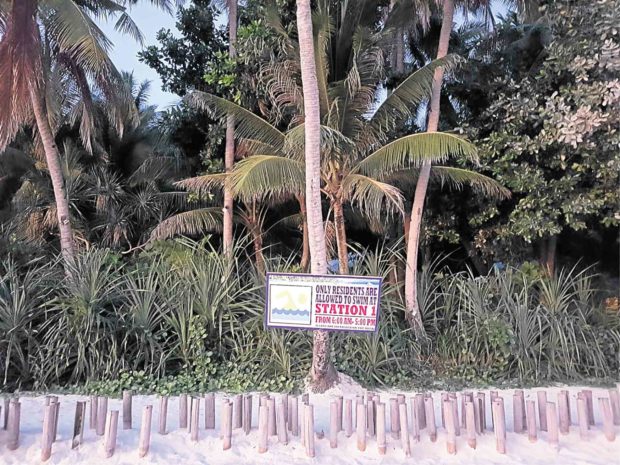
Loose ends
Weeks before “D Day,” people frantically tied loose ends, packing up. We tried to visit our favorite places—for me, my last spa treatment at Mandala Spa & Resort Villas, where I had worked since I first moved to the island 15 years ago.
The island was packed and the energy fever pitch. We all avoided what was at the back of our minds: “What the f*ck are we gonna do now?”
Meanwhile, some 600-plus armed policemen (who are all still here) descended on the island as a show of force, yup, to us “threatening” island dwellers (insert eye rolling emoji), and to assist with the heavy lifting. The knife’s final twist was when my driver Adonis told me he had no choice but to leave the island. Residents can surely relate to the loss of people one has grown attached to through the years. Do not take anyone for granted.
The first day after the closure was spent in shock and mourning. There was deafening silence, even with the sound of waves crashing on the shore.
For the first time in over 20 years, I was unemployed. My first thought was that now, I was a full-fledged housewife!
Meanwhile, my husband Mark had the grueling task of temporarily letting go of our Boracay SunCruiser (boat cruise business) staff, dropping anchor in harbor, and packing up the office (which was demolished a few days later to make way for the island-wide road widening). Witnessing our labor of love get torn down in one swift blow was devastating.
By nightfall, we hosted the first post-closure island party called “Love Lokal” at Epic Boracay, the beachfront club that Mark helps run. The event last April 27 marked the beginning of the six-month journey and gathered the locals as one family.
Labor Day party
On Labor Day (May 1), I started the day with this post: “Been trying to move on and looking at the bright side, but everywhere I look, I can’t find them, they’re all gone. Today, I salute Boracay’s work force, the very people that made this place so very special, the unsung heroes that fulfilled everyone’s holiday dreams with their heartfelt service…”
It turned out to be an incredible day as we joined other Boracaynons in the “Labor Day Festival” at White House Beach Resort, with John Munro of Cocomangas Shooter Bar on the decks. Cocomangas was notorious for its “Still Standing After 15 Shooters,” the longest running bar on the island, established in 1987. It closed its doors for good right before the island’s closure.

As Andree Abriam, owner of the infamous Beachcomber Bar of the ’80s and ’90s, put it: “The island may be closed but the happy inhabitants know how to keep their spirits high. The beach and the parties are what made Boracay famous!”
Meanwhile, the ports were packed with a mass exodus of workers and their families, by the thousands, livestock and pets in tow, stranded for lack of transportation.
The transportation allowance came from the Department of Natural Resources and the Department of Social Welfare and Development (DSWD) for those who opted to return to their hometowns—one I spoke with was given a measly P160 for his trip home to Ibajay in the Aklan mainland, whereas a private e-tricycle ride to the Cagban Port from D’Mall could cost P500.
Others in the hundreds looking for government support gathered in the Manoc Manoc covered court, enrolling for DSWD’s cash-for-work program that pays a regional daily minimum wage of P323.50 for a maximum of 30 days or a total of P9,705.
Around 30,000 regular and informal settlers have been severely affected by the total closure.
Not enough
“The government’s assistance is too little and not enough for our basic needs. It also cannot accommodate all those needing help,” said Yolanda Alejado, one of the leaders of We Are Boracay.
A vegetable and pork vendor, Alejado has no other source of income after hotels, resorts and restaurants closed. “It’s very painful for us. I can only cry silently when I cannot provide for the food that my children ask,” she said. (Source: newsinfo.inquirer.net.)
Days dragged into weeks, with a handful of businesses staying open to serve the locals for as long as they could. Commercial establishments that remained open dropped their prices, downsized their personnel, hoping to stay afloat for maybe another month on a wait-and-see. No one here is capitalizing on people’s hardships. People continue to work and earn just enough to sustain the business and cover expenses.
Grocery shelves remained moderately stocked with dry goods, but the fresh produce started to dwindle. Most shops were just waiting to finish their stocks. The market and roadside sari-sari stores still sold meat, fish and veggies, but getting to and from them is, like I said, an obstacle course, with very few tricycles on the excavated roads. The Land Transportation Office Region VI has been confiscating and impounding tricycles, the island’s main public utility vehicle, and motorcycles, delivery vans and golf carts as part of road-clearing and decongestion operations.
Time on our hands
On lazy days, I write or pick up a book, while my husband happily adds to his playlist on his Spotify channel, “Golden—The Boracay Rehab Closure Sunset Sessions (2018).” We join the island in a personal inventory: introspection, back to basics, quality time and embracing the moment.
With time on our hands, it’s easy to lose track of the days. I guess that’s normal when you have no work. Life has taken on a provincial pace. We can gaze at the ocean for hours. Last May 8, local John Chase Soon posted a baby black tip shark sighting, and Harry Sioson posted a baby whale shark sighting on Facebook, which I’d like to think are good signs that Boracay’s waters are healing.
Walking home from Sesame Street, the name adopted by this bohemian neighborhood in Bulabog, during low tide, we see the entire stretch of Bulabog Beach as a pastoral scene, except the vast crowd is picking from the shallow waters. On the “menu,” according to Marina, a longtime Ati household staff in the family compound where we live (in her native Inati dialect), are these delicacies: sikad-sikad (sea shells), alipuros (round shells), pugita (baby octopus), bitut (sea worm buried in the sand), and tilik (brown sea urchin) eaten raw with calamansi, while fisher folk catch patamba (isdang bato), best when deep-fried.
The fresh catch is cooked with jackfruit and coconut milk, and I’ve seen a few people trading a portion of their catch for coconuts, a rare commodity on an island.
It is quite a scene at night, with the flickering lights from cell phones illuminating the dark beach like twinkling stars.
We actually have a private “Beach Day” group that announces where friends are gathering for the day, and what they’re bringing. We’ve added movie dates at CityMall—never mind the power outages between scenes.
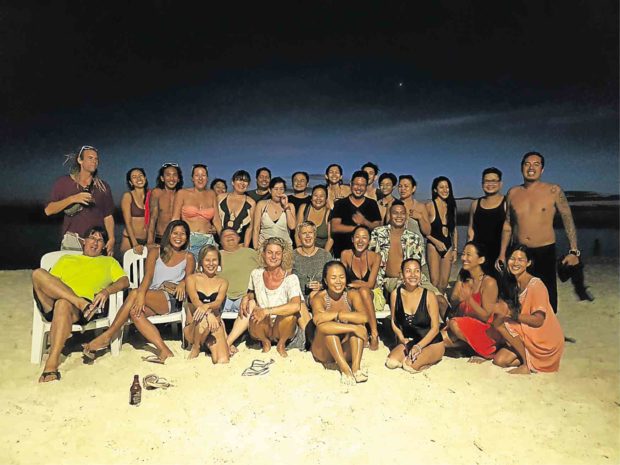
No small talk
We share not only an island home and a certain pride in living in Boracay, but also a mission—to keep the island afloat and to stop its total closure. Now we share the loss and challenges, and we share the plight of having to survive the next four months on an island closed for business.
We also share a duty to be vigilant to protect the island in rehab, by reporting irregularities, and to nurture it—keeping it company while she heals.
We were not against closing Boracay in the first place; we knew that it was necessary. We were against a total closure. It could have been done differently, in phases and by area, with proper consultation and synergy.
Water under the bridge now. None of us is standing in the way of progress, but is this real progress? It’s easy to demolish and break things down.
The true test is in the rebuilding of infrastructure, in the actual rehabilitation. All you see inland and along areas of White Beach itself is destruction. They’ve dug up the island, and meanwhile, as kilometers have been cleared or excavated, if they really wanted to meet the six-month deadline, I would have expected that there would be another team already working on the next phase.
Where is the master plan for rehabilitation? Wouldn’t presenting it to the public, especially to us residents, be the considerate thing to do, so we could at least anticipate and plan our moves?
Last May 18, the Boracay Inter-Agency Task Force held a coordination meeting on the island, and the feedback I gathered from a few attendees was that they were “underwhelmed” and left wanting for more answers. Some left feeling “short-changed.”
More recently, the Senate Committee on Environment and Natural Resources hearing in Manila last June 20 was a wake-up call. It was disappointing to see that the government agencies were ill-prepared for the hearing, and it was loud and clear that the rehabilitation is going nowhere at this point, with finger-pointing and excuses.
Two months into the closure, not much has been done. Meanwhile, Boracay loses hundreds of millions per day, as its workers and people watch and wait, feeding substandard canned goods and insect-infested rice to their children, which the DSWD dismissed as “mishandling” in the warehouses.
Stakeholders, many of whom have invested all that they have, still feel that they are being blamed for the problems that ultimately stem from the government’s decades of neglect, incompetence and complicity. A boutique hotel owner told me they were “marked” for a one-meter demolition. They argued that the basis of the property’s design and construction was the road widening plan, and when they consulted with the local government unit’s (LGU) lawyer, he apologized because he said that the first computation for the road widening plan was wrong.
At the hearing, Interior Assistant Secretary Epimaco Densing said the Department of Interior and Local Government’s target for a “soft opening” is September, and that only the “compliant” will be allowed to open.
First of all, the government could have simply shut down the violators, rather than the entire Boracay. The island generates 20 percent of the country’s total tourism revenue, the third-biggest contributor to the country’s gross domestic product.
Secondly, the word “compliant” should be defined, since so many of the alleged “non-compliant” are willing to comply, but were not issued papers owing to red tape, delays in processing, misinformation—again, government negligence.
Last May, as Environment Secretary Roy Cimatu checked for violations of environmental laws, he expressed surprise that the biggest violator was the sewage line (including some 70 manholes) that stretches along White Beach for at least 4 km, and which was reportedly installed in 2009 by the Philippine Tourism Authority, now the Tourism Infrastructure and Enterprise Zone Authority or Tieza, an agency of the Department of Tourism.
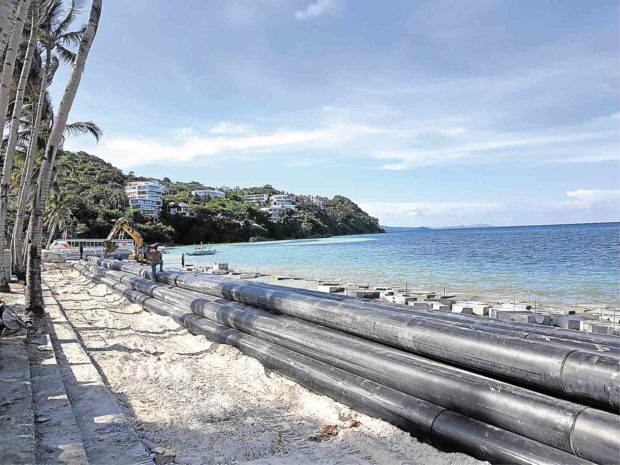
A portion of the pipe was approximately 20 m from the shoreline, covered by sandbags to conceal the outfall of sewage water to the main beach. (Source: newsinfo.inquirer.net.)
I appeal to the government agencies and the Interagency Task Force, don’t let the people’s sacrifices be for nothing. Thousands have been forced to abandon the island for the sake of saving its environment. Please make the six months or so count because we are all counting on you.
Marawi was destroyed by war, Tacloban was devastated by Supertyphoon “Yolanda” (international name Haiyan); but Boracay Island was ruined by greed and by the same government elected to protect it—the same agencies that are tearing it down.
Eyes and ears
I have volunteered with the Boracay Foundation Inc.’s Boracay Rehabilitation Monitoring Operations (BRMO), a community-led initiative to uphold transparency, cooperation and participation during the closure of Boracay. At the end of the rehabilitation, the group will come up with recommendations, suggested procedures, and data to guide the Interagency Task Force and the LGU for reopening.
As for the P490-million Boracay Circumferential Road project, most of the roadsides have been cleared, structures demolished, including private homes and commercial establishments to make way for the 12-m easement. However, in a stakeholders’ meeting, Department of Public Works and Highways assistant regional director for Region VI José Al Fruto revealed that the entire project would take more than three years to complete.
When asked if the island would open in time, he said that it is the drainage and sewerage water quality that will determine when the island could be reopened, and that they cannot continue with the actual building of the road network that will incorporate an improved drainage and sewerage system along the main road to contain in-land flooding, until the “water people” are done. And as of press time, they seem to have vanished.
At the end of the day, despite the obstacles and challenges we face, we are keeping each other company, keeping a watchful eye, keeping the peace and keeping the faith.
At the end of the day, we are a tight-knit dysfunctional family, composed of old-timers and newbies, local government and stakeholders. Differences are put aside with each pounding on concrete. Then, the shared hope and prayer that from the rubble will rise a better and brighter Boracay that, once healed, having spewed out the self-righteous, shall keep the greedy (and ugly) people away. —CONTRIBUTED

